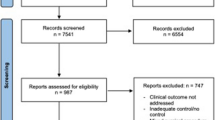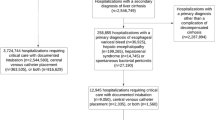Abstract
Background
Textbook outcome (TO) is an emerging concept within multiple surgical domains, which represents a novel effort to define a standardized, composite quality benchmark based on multiple postoperative endpoints that represent the ideal “textbook” hospitalization. We sought to define TO for liver transplantation (LT) using a cohort from a high procedural volume center.
Methods
Patients who underwent LT at our institution between 2014 and 2017 were eligible for the study. The definition of TO was determined by clinician consensus at our institution to include freedom from: mortality within 90 days, primary allograft non-function, early allograft dysfunction (EAD), rejection within 30 days, readmission with 30 days, readmission to the ICU during index hospitalization, hospital length of stay > 75th percentile of all liver transplant patients, red blood cell (RBC) transfusion requirement greater than the 75th percentile for all liver transplant patients, Clavien–Dindo Grade III complication (re-intervention), and major intraoperative complication.
Results
Two hundred and thirty-one liver transplants with complete data were performed within the study period. Of those, 71 (31%) achieved a TO. Overall, the most likely event to lead to failure to achieve TO was readmission within 30 days (n = 57, 37%) or reoperation (n = 49, 32%). Overall and rejection-free survival did not differ significantly between the 2 groups. Interestingly, patients who achieved TO incurred approximately $60,000 less in total charges than those who did not. When we limit this to charges specifically attributable to the transplant episode, the difference was approximately $50,000 and remained significantly less for those that achieved TO.
Conclusions
Here, we present the first definition of TO in LT. Though not associated with long-term outcomes, TO in LT is associated with a significantly lower charges and costs of the initial hospitalization. A multi-institutional study to validate this definition of TO is warranted.



Similar content being viewed by others
References
Starzl TE et al (1963) Homotransplantation of the liver in humans. Surg Gynecol Obstet 117:659–676
Adam R et al (2012) Evolution of indications and results of liver transplantation in europe. a report from the european liver transplant registry (ELTR). J Hepatol 57(3):675–688
Agopian VG et al (2013) The evolution of liver transplantation during 3 decades: analysis of 5347 consecutive liver transplants at a single center. Ann Surg 258(3):409–421
Kim WR et al (2017) OPTN/SRTR 2015 annual data report: liver. Am J Transplant 17(Suppl 1):174–251
Moris D et al (2017) Liver transplantation for unresectable colorectal liver metastases: a systematic review. J Surg Oncol 116(3):288–297
Moris D et al (2017) Liver transplantation in patients with liver metastases from neuroendocrine tumors: a systematic review. Surgery 162(3):525–536
Moris D et al (2019) Comparison between liver transplantation and resection for hilar cholangiocarcinoma: a systematic review and meta-analysis. PLoS ONE 14(7):e0220527
Dutkowski P et al (2015) Challenges to liver transplantation and strategies to improve outcomes. Gastroenterology 148(2):307–323
Gao Q et al (2019) Improvement in liver transplant outcomes from older donors: a US national analysis. Ann Surg 270(2):333–339
Taylor R et al (2019) Survival advantage for patients accepting the offer of a circulatory death liver transplant. J Hepatol 70(5):855–865
Muller X et al (2018) Defining benchmarks in liver transplantation: a multicenter outcome analysis determining best achievable results. Ann Surg 267(3):419–425
Kolfschoten NE et al (2013) Focusing on desired outcomes of care after colon cancer resections; hospital variations in 'textbook outcome'. Eur J Surg Oncol 39(2):156–163
Busweiler LA et al (2017) Textbook outcome as a composite measure in oesophagogastric cancer surgery. Br J Surg 104(6):742–750
Merath K et al (2019) A multi-institutional international analysis of textbook outcomes among patients undergoing curative-intent resection of intrahepatic cholangiocarcinoma. JAMA Surg 154:e190571
van Roessel S et al (2020) Textbook outcome: nationwide analysis of a novel quality measure in pancreatic surgery. Ann Surg 271(1):155–162
Merath K et al (2020) Textbook outcomes among medicare patients undergoing hepatopancreatic surgery. Ann Surg 271:1116–1123
Priego P et al (2019) Comparison of laparoscopic versus open gastrectomy for treatment of gastric cancer: analysis of a textbook outcome. J Laparoendosc Adv Surg Tech A 29(4):458–464
Karthaus EG et al (2017) Textbook outcome: a composite measure for quality of elective aneurysm surgery. Ann Surg 266(5):898–904
Poelemeijer YQM et al (2019) Textbook outcome: an ordered composite measure for quality of bariatric surgery. Obes Surg 29(4):1287–1294
Levy J et al (2020) Gastrectomy case volume and textbook outcome: an analysis of the population registry of esophageal and stomach tumours of ontario (PRESTO). Gastric Cancer 23:391–402
Olthoff KM et al (2010) Validation of a current definition of early allograft dysfunction in liver transplant recipients and analysis of risk factors. Liver Transpl 16(8):943–949
Lee DD et al (2016) Early allograft dysfunction after liver transplantation: an intermediate outcome measure for targeted improvements. Ann Hepatol 15(1):53–60
Dijs-Elsinga J et al (2010) Choosing a hospital for surgery: the importance of information on quality of care. Med Decis Making 30(5):544–555
Tsilimigras, DI, et al. (2020) Assessing textbook outcomes following liver surgery for primary liver cancer over a 12-year time period at major hepatobiliary centers. Ann Surg Oncol
Dimick JB et al (2009) Composite measures for predicting surgical mortality in the hospital. Health Aff (Millwood) 28(4):1189–1198
Dimick JB, Welch HG, Birkmeyer JD (2004) Surgical mortality as an indicator of hospital quality: the problem with small sample size. JAMA 292(7):847–851
Dimick JB et al (2012) Composite measures for rating hospital quality with major surgery. Health Serv Res 47(5):1861–1879
van der Kaaij RT et al (2018) Using textbook outcome as a measure of quality of care in oesophagogastric cancer surgery. Br J Surg 105(5):561–569
Merath K et al (2019) a multi-institutional international analysis of textbook outcomes among patients undergoing curative-intent resection of intrahepatic cholangiocarcinoma. JAMA Surg 154(6):e190571
Levy J, et al. (2020) Textbook outcome and survival in patients with gastric cancer: an analysis of the population registry of esophageal and stomach tumours in ontario (PRESTO). Ann Surg
Moris D et al (2020) Textbook outcomes among patients undergoing retroperitoneal sarcoma resection. Anticancer Res 40(4):2107–2115
Tsilimigras DI, et al. (2019) Hospital variation in textbook outcomes following curative-intent resection of hepatocellular carcinoma: an international multi-institutional analysis. HPB (Oxford)
Cramm SL et al (2016) Failure to rescue as a quality improvement approach in transplantation: a first effort to evaluate this tool in pediatric liver transplantation. Transplantation 100(4):801–807
Sweigert PJ et al (2020) Assessment of textbook oncologic outcomes following pancreaticoduodenectomy for pancreatic adenocarcinoma. J Surg Oncol 121(6):936–944
Salet N et al (2018) Is textbook outcome a valuable composite measure for short-term outcomes of gastrointestinal treatments in the netherlands using hospital information system data? a retrospective cohort study. BMJ Open 8(2):e019405
Funding
None.
Author information
Authors and Affiliations
Corresponding author
Ethics declarations
Conflict of interest
The authors report no conflicts of interest.
Additional information
Publisher's Note
Springer Nature remains neutral with regard to jurisdictional claims in published maps and institutional affiliations.
Rights and permissions
About this article
Cite this article
Moris, D., Shaw, B.I., Gloria, J. et al. Textbook Outcomes in Liver Transplantation. World J Surg 44, 3470–3477 (2020). https://doi.org/10.1007/s00268-020-05625-9
Published:
Issue Date:
DOI: https://doi.org/10.1007/s00268-020-05625-9




